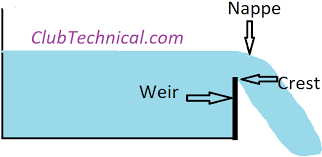Transparent Concrete, Materials, Use, Advantages & Disadvantages of Transparent Concrete
Transparent Concrete, Materials, Use, Advantages & Disadvantages of Transparent Concrete
Transparent concrete may be defined as hardened concrete that permits passing light through it. It is also named light-transmitting concrete or translucent concrete.
Transparent concrete increases the aesthetic beauty of the building so, it is popular in recent times. At nighttime, the light-transmitting concrete is more decorative, the light of the moon passing through the concrete to your rooms.
Transparent concrete is similar to ordinary concrete because the strength of both concrete is the same.
Generally, the internal wall is made by the use of transparent concrete. But, it is not commonly used for external walls because it may interfere with your privacy.
Materials Used In Transparent Concrete
Transparent concrete is manufactured by using a combination of fiber optics and fine concrete. These fibers turn into concrete-like other aggregates. These optical fibers can pass light from natural and artificial sources into spaces covered by translucent concrete panels.
The main reason for using optical fiber in concrete is that it can transmit light even at an incident angle greater than 60º. Optical fiber consists of three layers called core, cladding, and buffer coating or jacket. The light is passed through the core of the optical fiber.
Transparent concrete is manufactured using fine materials only. It doesn’t include coarse aggregates. This type of concrete has a compressive strength similar to that of ordinary high-strength concrete around 70 MPa.
Product - Light transmitting concrete
Form - Prefabricated block
Ingredient - 96% concrete, 4% optical fiber
Density - 2100 - 2400 kg/m2
Block size - 60 cm*30 cm
Thickness - 25 - 500 mm
Colour - White, grey-black.
Fiber distribution - Organic
Finished - Polished
Compressive strength - 50 N/mm2
Bending tensile strength - 7 N/mm2
Materials Used
The materials used for the construction of this concrete are as follows:
a. Cement
As the optical fiber is only responsible for the transmission of light, there is no special cement required. So, ordinary Portland cement is utilized for the construction of transparent concrete.
b. Sand
Since the transparent concrete is manufactured only using fine materials, the size of sand should pass through a 1.18mm sieve. The sand should be always free from any types of impurities such as vegetation, large stones, etc.
c. Water
The water to be utilized for transparent concrete must be of drinking water quality, free from any types of impurities.
d. Optical fibers
Optical fibers in the range of 4 to 5% by volume are utilized for transparent concrete. The thickness of the optical fibers can be varied between 2 µm and 2 mm to look right on the particular demand of light transmission.
Uses of Transparent Concrete
The uses of this concrete are as follows:
a. For decorative purposes.
b. Illuminate wall.
c. Looks creative with a design.
d. It can be used on the pavement or load-bearing walls too.
e. Used to increase visibility in a dark area.
f. Light fixture.
g. Use as transparent and decorative floors.
h. It is used to save electricity.
i. It is used in furniture for aesthetic view.
Advantages
The main advantages are as follows:
a. Fewer light bulbs are needed.
b. It has very good architectural properties for giving a good aesthetical view to the building.
c. It passes the light through it.
d. It saves a lot of electricity.
e. it is fully environment friendly because of its light-transmitting characteristics, so energy consumption can be decreased.
Disadvantages
The main disadvantages of transparent concrete are as follows:
a. The casting of transparent concrete blocks is hard for workers so a special skilled person is needed.
b. The concrete is very costly due to use of the optical fibers.
c. It affects privacy.





Comments
Post a Comment